Thirty years ago, the process of applying to residency was cumbersome and clunky. It was dependent on paper applications and snail mail, and programs and applicants wanted something better.
And then, the Association of American Medical Colleges (AAMC) came to the rescue.
With their new Electronic Residency Application Service (ERAS), all residency residency applicants had to do was upload their application documents onto a floppy disk, drop it off at their dean’s office, and then use their dial-up modem to wait for interview offers to arrive in their AOL e-mail accounts.
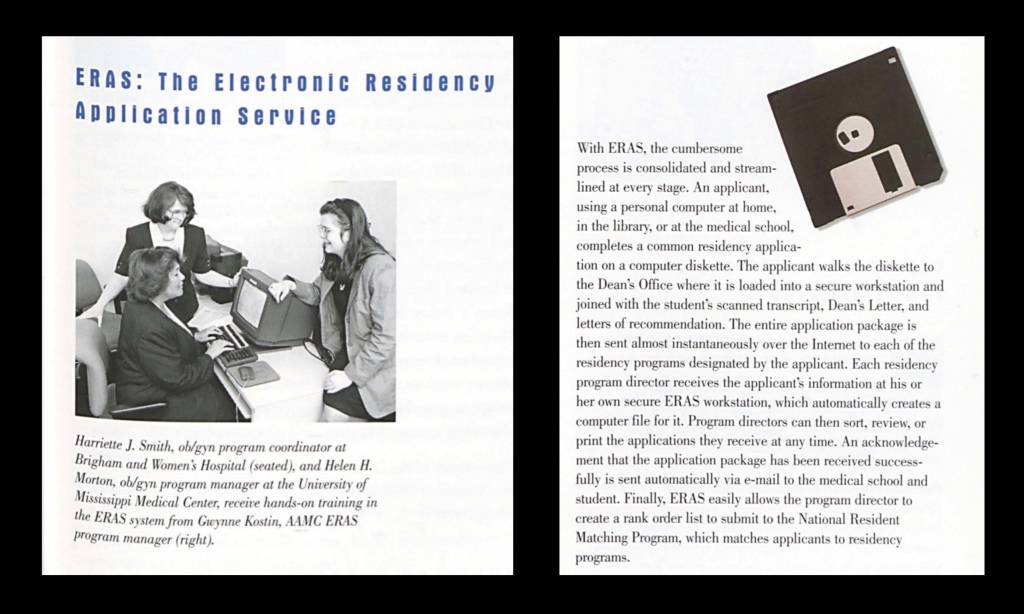
The implementation of ERAS represented a seismic change for the residency selection process, and to be sure things went well, the AAMC didn’t roll it out to all programs simultaneously. Instead, they created a partnership with OB-GYN program directors to pilot the new product.
Thus began a twenty-five year relationship between OB-GYN residency programs and ERAS. From the outside, it had the look of a marriage that would last.
But today, OB-GYN program directors announced that they wanted a divorce.
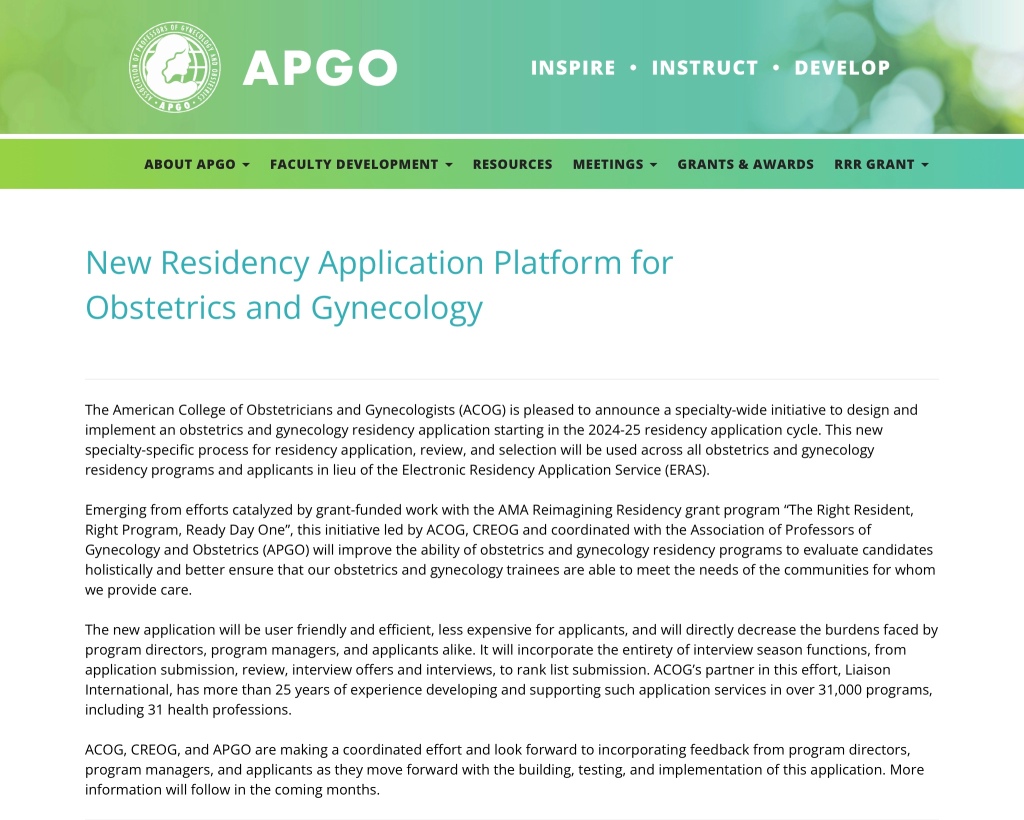
This is big news that may have significant downstream effects for applicants, programs, and the residency selection system as a whole. And you know what that means.
Yup, that’s right.
Time to break it down, Winners & Losers™️ style.
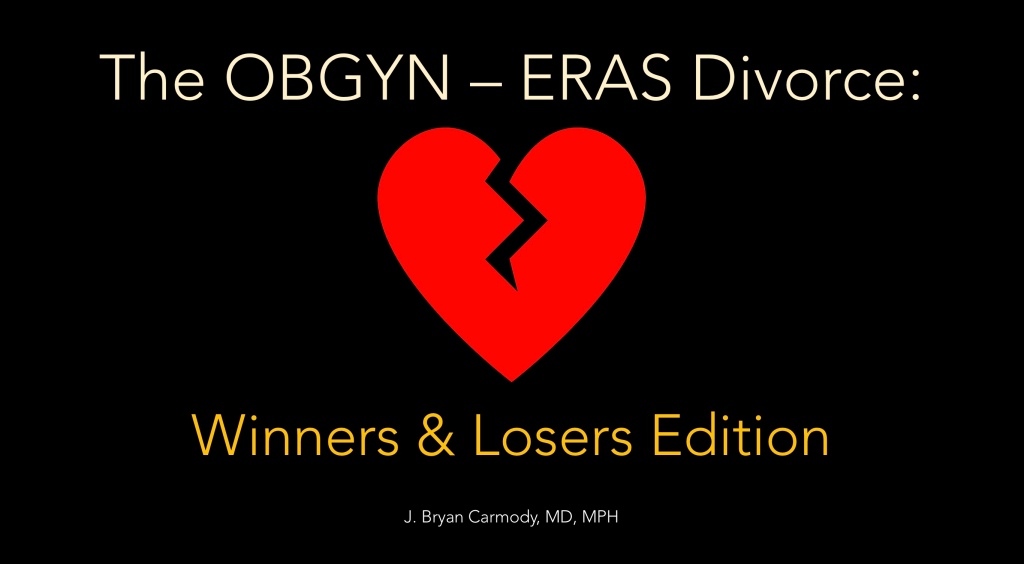
–
LOSER: The AAMC.
ERAS didn’t just dramatically change residency selection – it dramatically changed the finances of the AAMC.
Fueled by Application Fever, ERAS became the AAMC’s cash cow, generating more revenue than the organization takes in from the MCAT, AMCAS, and membership dues combined.
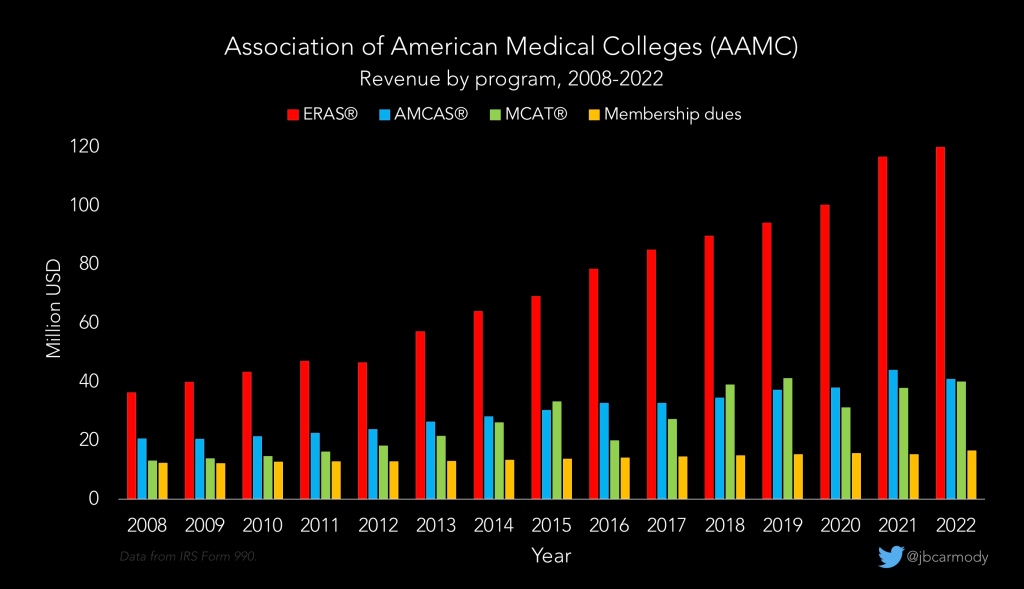
OB/GYN is a relatively small specialty… but losing their applicants won’t be painless.
How much will it hurt?
Well, last year, 2,613 OB/GYN applicants submitted an average of 63-83 applications apiece (depending on their educational background). Assuming the same number of applicants and applications for the 2024-2025 application cycle will cost the AAMC $3,362,760.
That’s a nice chunk of change – but it’s still just 2.8% of ERAS revenue. The AAMC issued a press release noting their surprise and dismay about the OB-GYN decision – but they’ll really be dismayed if other specialties jump ship.
–
WINNER: Liaison International.
ERAS’s loss is Liaison International’s gain.
Unlike the tax-exempt AAMC, Liaison International is a for-profit company whose early growth was fueled by private equity investment. Their Centralized Application Services platform has a slick user interface and is already used by many colleges and universities – but making a serious move into the lucrative market of graduate medical education market is still a huge play.
–
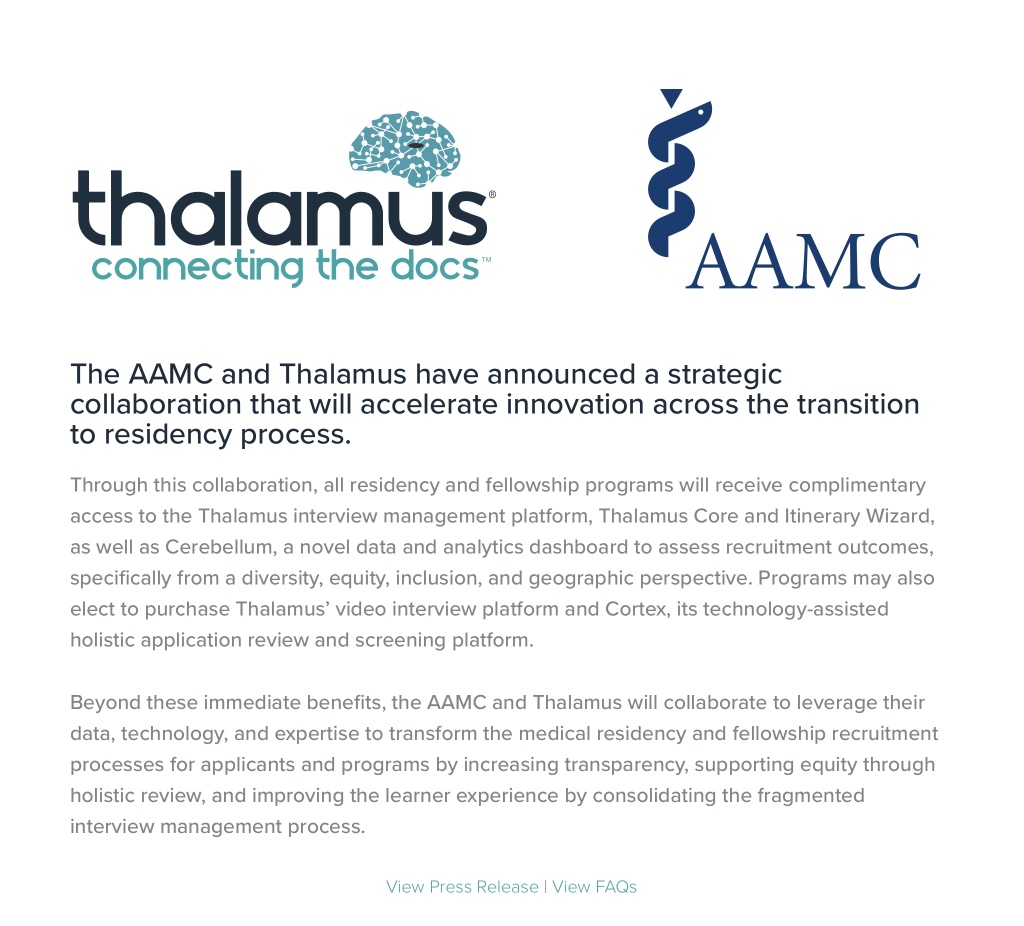
LOSER: Thalamus.
Not long ago, Thalamus was the disruptive innovator that seemed best poised to challenge ERAS. But in the span of a couple of years, Thalamus went from raising capital to expand its suite of software for residency programs and applicants to announcing a strategic partnership with the AAMC.
It’s easy to understand why Thalamus wanted this partnership – the AAMC is paying them handsomely so they can provide Thalamus’ superior interview scheduling platform (and a couple of other products) to every residency program that uses ERAS. But the fact that the AAMC – which controls 98-99% of residency applications – felt threatened by a plucky upstart with better tech shows shows how outdated their infrastructure has become. My guess is they feared Thalamus growing into a direct competitor and envied their software development and data-harvesting capabilities. (Hey, if you can’t beat ‘em…)
–
WINNER: Program directors.
I don’t know why, exactly, OB-GYN leaders decided to cut ties with ERAS now. But I can venture a pretty good guess.
Program directors in all specialties are suffocating under the weight of Application Fever, and from time to time, they’ve asked the AAMC to help by sharing data or making changes to the ERAS application or policies.
To be fair, the AAMC has made more significant changes to the ERAS application in the past 2 years than in the previous 20, and the updates to this year’s application are mostly for the better. Still, the changes that have been made occurred only after a lot of work from programs. It’s easy to imagine OB-GYN program directors getting fed up with the AAMC’s data hoarding and glacial pace of innovation seeking out a partner more interested in innovation and improvement.
Still, switching to a new platform is a lot of work – and I’ll bet AAMC officials never expected anyone would actually quit using their service. But now that a major specialty has done just that, threats from other specialties to do the same will carry a lot more weight.
–
PUSH: The NRMP.
To be clear, OB-GYN’s decision to receive applications using a different system does not impact their intent to use the NRMP Match. Still, one phrase in their press release caught my eye:
The new application will be user friendly and efficient, less expensive for applicants, and will directly decrease the burdens faced by program directors, program managers, and applicants alike. It will incorporate the entirety of interview season functions, from application submission, review, interview offers and interviews, to rank list submission.
(emphasis added)
Just like the AAMC’s ERAS, the NRMP’s R3 system is not irreplaceable. It wouldn’t be that hard for a specialty to run their own match – heck, urology and ophthalmology already do.
For now, OB-GYN’s decision means absolutely nothing for the NRMP… other than perhaps providing a reminder that even a near-monopoly can’t protect an organization that isn’t responsive to its stakeholders.
–
LOSER: Deans.
To ensure that their students receive appropriate consideration at the residency programs to which they apply, deans have to adhere to a strict calendar for institutional document submission. That won’t change – but now school officials will have to manage uploading transcripts and MSPEs in a new system.
–
PUSH: 2024-2025 OB-GYN applicants.
Say what you will about ERAS – and if you say it’s clunky, cumbersome, and often-unreliable, you’d be right – but it’s the devil we know. Now OB-GYN applicants will have to contend with a new system. And although Liaison International is no Johnny-come-lately to applications in general, it’s also hard to imagine its maiden voyage with OB-GYN going off without a hitch.
Spending a few months ironing out glitches after releasing a new product may be par for the course for software engineers – but for residency applicants, the six months of the residency application season are a high-stakes one-off with potentially career-altering implications.
ResidencyCAS promises lower fees and a better user experience than ERAS, so if they can steer clear of technical issues, OB-GYN applicants may get moved to the Winners column.
–
LOSER: Dual applicants.
Even if ResidencyCAS is a better product, around one-third of MD and DO OB-GYN applicants apply to and rank another specialty… and these folks will still be forced to slog through ERAS.
–
LOSER: The OB-GYN unmatched.
There’s nothing good about going unmatched.
But at least when you go unmatched in a specialty that’s already using ERAS, your application is more or less ready to go if you want to try your luck in the SOAP.
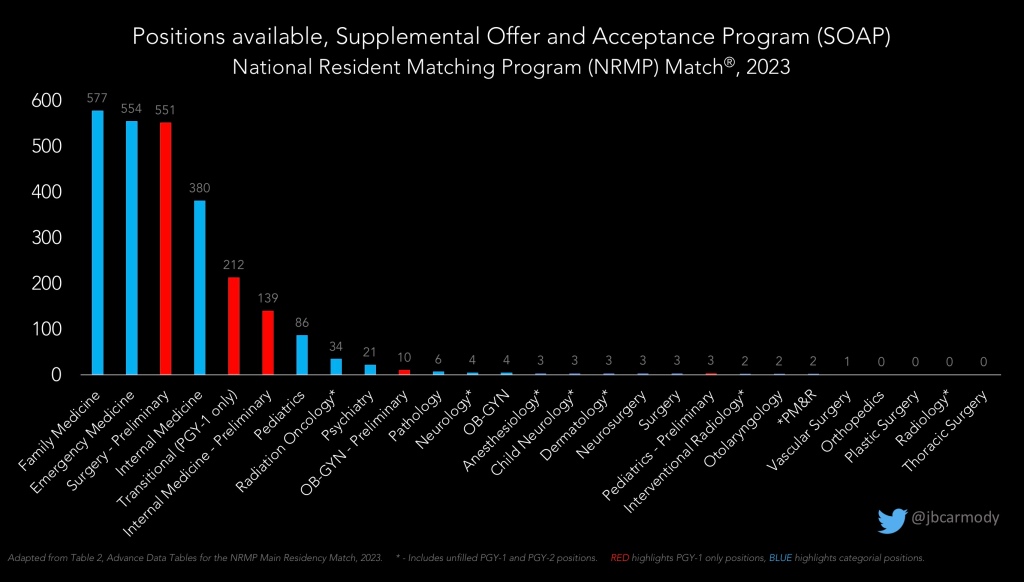
Remember, OB-GYN is a competitive specialty.
Last year, 13% of MD seniors, 30% of DO seniors, 60% of U.S. citizen international medical graduates (IMGs), and 73% of non-US citizen IMGs who wanted to match in OB-GYN went unmatched. If these folks don’t plan ahead (or dual apply), there will be a lot of disappointed applicants scrambling to complete their application in a new system so they can fight for a leftover position in a different specialty.
–
WINNER: Residency selection.
It’s important to recognize that residency program directors don’t set their standards and review applicants in a vacuum. The software that they use – through the information that it collects and the way it chooses to present that information – helps set their priorities.
Consider, for instance, USMLE scores.
If you want to review an applicant’s USMLE transcript in ERAS, you can: just click and open the PDF.
If that were the only way that test scores were accessible to program directors, USMLE scores wouldn’t have nearly the primacy in residency selection that they do. But in addition to the PDF of the transcript, ERAS includes the actual score in a different data field, turning this piece of data into a filterable numeric variable.
The very way that ERAS collects information provides a subtle comment on how programs should use and interpret it.
If you don’t want residency programs to screen applicants in a certain way – say, by screening out applicants from DO schools, or whose year of graduation was more than a certain number of years in the past – then a software program should refrain from turning those datapoints into easily-filterable variables. If you acknowledge that different programs have different missions, then a software program should allow easy customizability rather than requiring programs to come up with complicated workarounds.
Back in the old days, the AAMC actually surveyed programs to see what information should be included in the original ERAS application. But that information, and the way it has been presented, has been largely static over the past 15 years.
My hope is that OB-GYN programs and ResidencyCAS will seize the fresh start and superior platform to develop a more thoughtful, more easily customizable system that will enable applicants to authentically present themselves and their accomplishments – and allow them to be fairly reviewed and evaluated.
–
YOU MAY ALSO LIKE:
Match Day 2023: Winners & Losers Edition
The Applicant’s Guide to Strategic Preference Signaling
Journal Club: Comparative Data in the MSPE
The Residency Selection Arms Race, Part 3: The Research Arms Race